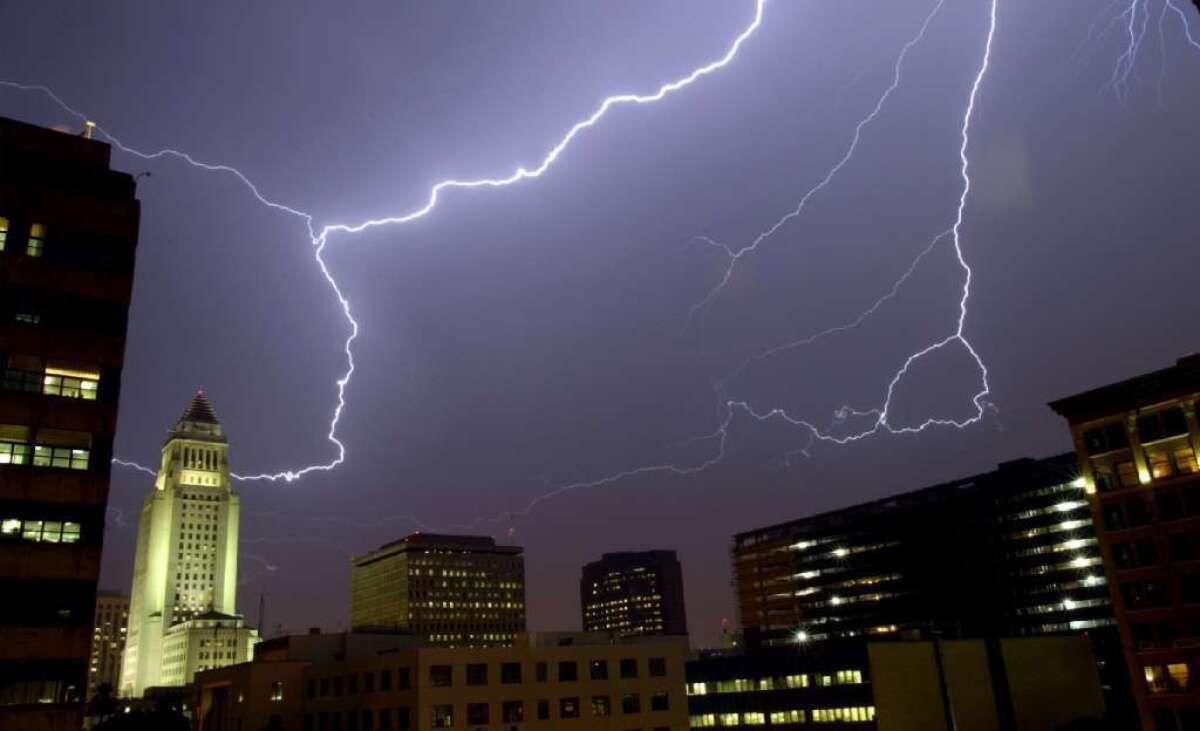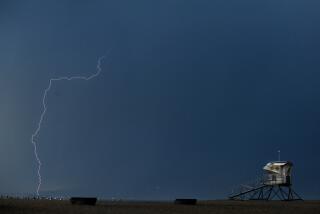Rocketing solar winds may spark lightning as they buzz Earth

- Share via
The activity of the sun may have more of an influence on lightning storms on Earth than was previously thought, a new study suggests.
Researchers at the University of Reading in England found that when an especially fast-moving solar wind washed over the Earth, there was a corresponding uptick in the number of lightning storms recorded on the planet.
A study describing the findings was published Thursday in the journal Environmental Research Letters.
Lightning strikes worldwide about 4 million times a day, and yet it remains a bit of a scientific mystery.
To create a lightning spark in a lab, researchers need an energy field of about 150 volts per meter. However, measurements show that inside an actual thunder cloud the energy field is just 30 volts per meter -- theoretically not conducive enough to allow lightning to form.
So, how do we get lightning? One theory suggests that the gas in our atmosphere is electrified by cosmic rays -- highly energized, fast-moving particles that were flung speeding into space by an exploding star.
When our sun is in the most active part of its 11 year cycle, its magnetic field is at its strongest and should keep fewer cosmic rays from entering our atmosphere. Therefore, you would expect to see fewer lightning strikes at the peak of the solar cycle than at its base, explained Chris Scott, a professor of space and atmospheric physics at the University of Reading and the lead author of the study.
While previous studies have shown an anti-correlation between solar activity and lightning over the long term, Scott and his colleagues found just the opposite when they looked at the relationship between solar activity and lightning over a much shorter period of a few weeks.
“When the sun was most active we did see a drop in cosmic rays, but we also saw an increase in lightning,” he said. “And that surprised us.”
As part of the study, the researchers looked at the speed of the solar wind coming off the sun, which varies depending on which part of the sun is facing the Earth. When a fast solar wind washed over the Earth, the researchers found that the number of recorded lightning strikes went up.
So what’s going on? The researchers can’t say for sure, but one possibility is that charged particles from the sun are riding the wave of these especially fast solar winds. While they don’t move quite as quickly as the cosmic rays, they may move fast enough to serve the same function as the cosmic rays with the aid of a speedy push from the solar wind.
“They aren’t moving fast enough to hit the ground, but they can penetrate to where the thunder clouds are,” Scott said in an interview with The Times. “So they could be making the air slightly more electrically conductive so that a spark can start and jump more easily.”
Scott noted that his findings are still in the preliminary stages. “We know the solar particles are getting accelerated by the solar wind because we can measure that, but the rest of the story is subjective,” he said. “We are assuming they do the same job as cosmic rays, but we need to examine it.”
If the correlation proves to be true, it could help meteorologists predict the likelihood of lightning storms in the future.







